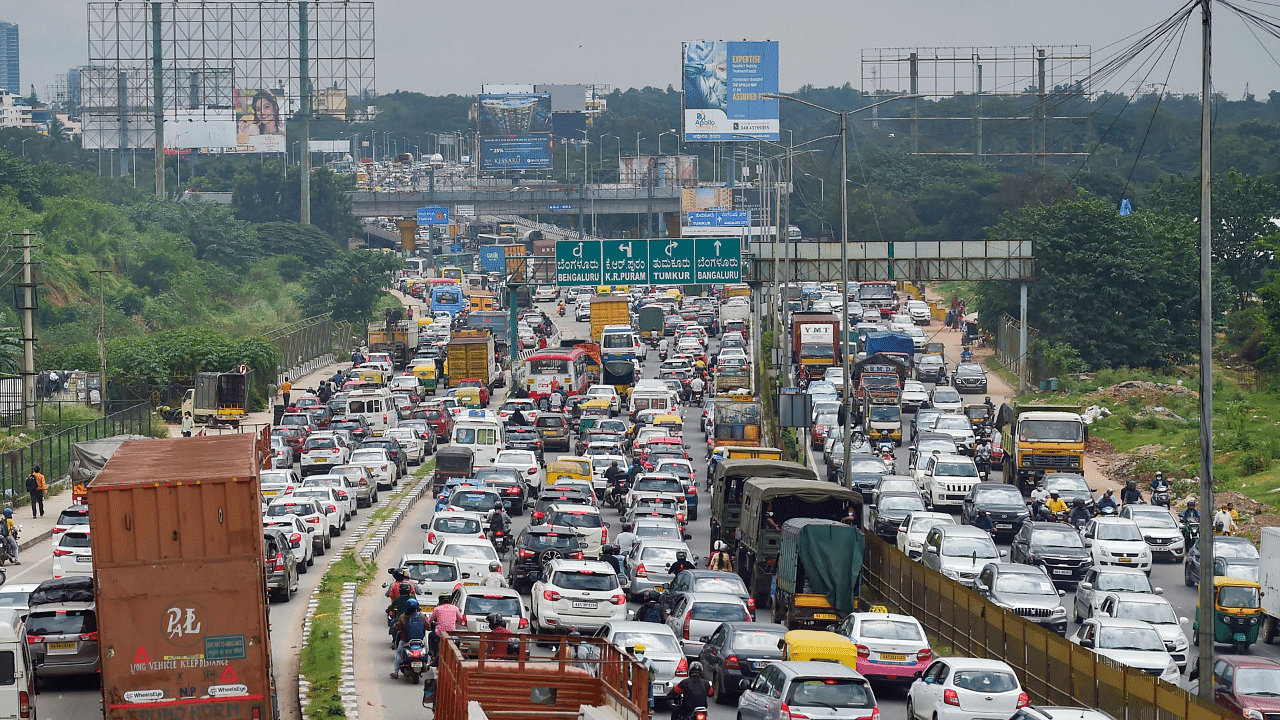
Multimodal transport, last mile connectivity and integrated mobility solution are favourite jargons that have been bandied about for a while now, however, this consciousness has done little to ease the traffic snarls on Indian urban roads and more famously Bengaluru thoroughfares.
In 2022, four Indian cities - Mumbai, Bengaluru, Delhi and Pune - well known for their traffic jams, featured on TomTom’s Traffic Index 2021 report, which tracks congestion statistics of cities around the world. Remarkably, these choked-up roads notwithstanding, the world’s fourth-largest automobile market saw a record number of retail car sales in 2022.
Evidently, there’s many a slip between the cup and the lip. Why have all the talk and strategising not yielded any impact on the roads? Why is seamless mobility still elusive?
Fact is, despite cities like Bengaluru offering a variety of public transport options, such as metro, suburban rails and buses, the number of takers for them remains limited. Policy experts blame this on the lack of seamless connectivity.
“What has been the inhibitor of using the existing multimodal transport is that it is not frictionless,” said Sarayu Natarajan, Founder, Aapti Institute – a research institute building solutions of societal impact, justice and equity.
The connectivity between any two modes of transport like bus and auto or metros in negotiating the first and last mile is not free of hitches, she underscored. “Addressing multi-modal transport is not just providing a bouquet, but also thinking through the points of friction and why they occur,” Natarajan said.
“For multimodal transport to work, they need to be seamlessly and comfortably integrated in terms of cost and comfort,” echoed Spurthi Ravuri, Senior Associate, E-mobility, Center for Study of Science, Technology and Policy (CSTEP), a policy think-tank.
For a transport model that involves multiple modes of mobility, multiple bodies handling the respective modes of transport need to come together for the model to work. The lack of coordination between different concerned departments is repeatedly highlighted as a problem. “A handshake between the departments has to happen to make the multimodal mobility work,” Ravuri underlined.
For multimodal transport to work, the model has to address the mobility needs of all the stakeholders. Some blamed the slow pace of city planners in catching up with the rapid urbanisation of the landscape.
“The movement of people from non-urban to urban India is accelerating and civic planning is not moving fast enough to accommodate the change. I think Bengaluru is an example of this,” said Mustafa Wajid, Chair - Future of Mobility and Transport Panel, IET India.
Others called for civic engagement in policy-making to address the interests of women, cyclists and pedestrians. “Particularly for women, if they experience a threat to safety, they might prefer a mode of transport that is inefficient. These conversations need to become a part of the policymaking process to understand the friction points,” said Natarajan.
She added that currently the transport planning included only elite bodies and “well-off people” like residential welfare associations (RWAs) as part of the policymaking and did not factor in mobility from the affordability point of view.
“The discussions around mobility need to be more representative of those facing the problem,” Natarajan said.
More pertinent is the realisation that multimodal mobility is not all about public transport. As Bengaluru Metro Rail Corporation Ltd Managing Director Anjum Parwez pointed out, recently during a panel discussion at the DH Bengaluru 2040 Summit, “Metros will not reach all the way to our homes. People will eventually have to walk for about a kilometre to reach their nearest public transport option.”
In this context, several Indian states also announced the setting up of bodies – like the Unified Metropolitan Transportation Authority (UMTA) and the Bengaluru Metro Land Transport Authority (BMLT) – to put in line comprehensive mobility plans in their jurisdictions.
Then again, the discussion returns to the need for departments to come together and share data to enable quicker problem-solving. An integration of auto-rickshaw stands and shared two-wheeler taxis can also be done using digitisation and integration of various mobility platforms using the available data, said IET’s Wajid.
“A phased digitisation approach to allow the users to track the routes of various forms of public transport, check the timetable and make the payment for tickets through the integrated application needs to be done, and UPI can be taken as a model for this,” he listed out.